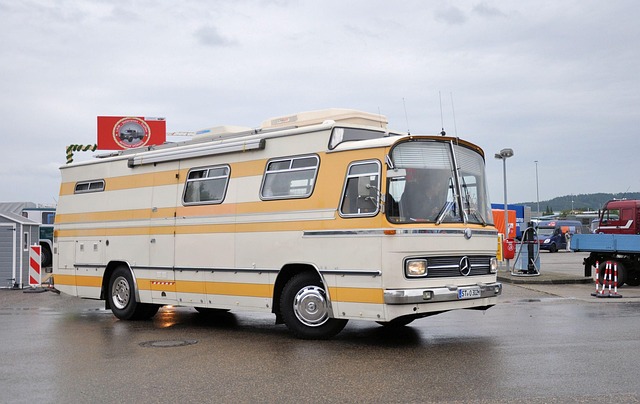Looking to register your car in California? This guide walks you through the entire process, from gathering essential documents to visiting a DMV office. We’ll highlight the importance of understanding the California vehicle registration requirements and provide step-by-step instructions, including how to use a DMV VIN verifier for accurate information. By following these steps, you’ll ensure a smooth and efficient car registration experience in the Golden State.
- Understanding the California Vehicle Registration Process
- Gather Required Documents for Car Registration
- Visit a California Department of Motor Vehicles (DMV) Office
- Complete the Registration Application Form
- Verify Your Vehicle's VIN and Finalize Registration
Understanding the California Vehicle Registration Process

Understanding the California Vehicle Registration Process
Registering a car in California involves several steps, ensuring your vehicle complies with state laws and regulations. The process begins with gathering essential documents, including proof of ownership, identification, and insurance. Once prepared, drivers can visit their local Department of Motor Vehicles (DMV) office or utilize online services for registration. A key component of this process is the verification of the Vehicle Identification Number (VIN). Using a DMV VIN verifier or even a mobile vin inspection tool, owners ensure the vehicle’s VIN is accurate and matches the documentation.
This initial verification step is crucial to prevent fraud and ensure the vehicle’s history is accurately reflected. After successful verification, drivers can proceed with payment for registration fees, which vary based on vehicle type and age. With these steps completed, California residents can legally operate their vehicles on state roads, highlighting the importance of a thorough and accurate registration process.
Gather Required Documents for Car Registration

Before you begin the registration process, ensure you have all the necessary documents. The California Department of Motor Vehicles (DMV) requires several key pieces of information and forms for a successful car registration. One crucial element is the Vehicle Identification Number (VIN) verification. You can obtain this through various methods, including a mobile vin inspection or using an online tool provided by the DMV. Additionally, you’ll need proof of ownership, typically a title document or a bill of sale, along with valid identification like a driver’s license.
Don’t forget to gather insurance information and any registration fees required at the time. It’s always best to check with your local DMV office for the most accurate and up-to-date list of documents, as specific circumstances might require additional paperwork. With these vin inspection details in hand, you’ll be well on your way to registering your vehicle smoothly and efficiently.
Visit a California Department of Motor Vehicles (DMV) Office

To begin the registration process for your car in California, you’ll need to visit a local California Department of Motor Vehicles (DMV) office. This is where you’ll officially register your vehicle and obtain the necessary documents. The DMV staff will guide you through the requirements, which include providing essential details about your car, such as its make, model, and year. They may also conduct a visual inspection to verify the vehicle’s condition, ensuring it meets safety standards known as the “mobile vin verification” or “vin inspection.”
During this visit, the DMV will require you to present valid identification documents, proof of insurance, and any applicable fees. They’ll assign a unique Vehicle Identification Number (VIN) to your car, which is crucial for future reference. Some services even allow for a convenient “mobile vin verifier” process, where your VIN can be checked remotely, making the registration experience smoother and more efficient.
Complete the Registration Application Form

To register your car in California, start by obtaining an application form from the DMV or downloading it from their official website. Ensure all sections are completed accurately, including your personal information and vehicle details such as make, model, year, and the Vehicle Identification Number (VIN). The VIN is a crucial piece of information used to verify ownership and check for any recalls or outstanding issues with the vehicle. Utilize a DMV VIN verifier to confirm the vehicle’s history and ensure it meets all legal standards.
Once your application is ready, submit it along with the required documents and fees to your local California DMV office. This process might be more efficient if you opt for a mobile vin inspection service, allowing you to verify your vehicle’s details remotely before submitting your registration application.
Verify Your Vehicle's VIN and Finalize Registration

After gathering your necessary documents, it’s time to verify your vehicle’s VIN (Vehicle Identification Number) through a trusted DMV vin verifier or consider utilizing a mobile vin inspection service for added convenience. This crucial step ensures that your car’s details match the records, preventing any potential issues during registration. A simple online check or mobile vin verification can save you time and hassle later on.
Once confirmed, proceed to finalize the registration process with the California Department of Motor Vehicles (DMV). This involves filling out the required forms, providing proof of insurance, and possibly paying additional fees. Remember, a meticulous mobile vin verifier can make these steps smoother, ensuring your car’s registration is accurate and up-to-date from the start.
Registering your car in California is a straightforward process, and with the right preparation, it can be completed efficiently. By gathering all necessary documents, visiting a DMV office, and accurately filling out the registration form, you’ll have your vehicle officially registered in no time. Remember to utilize a trusted dmv vin verifier to ensure your vehicle’s unique identifier (VIN) is accurate, as this step is crucial for completing the registration process successfully.
